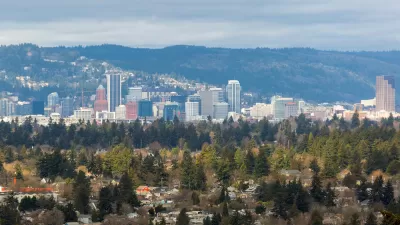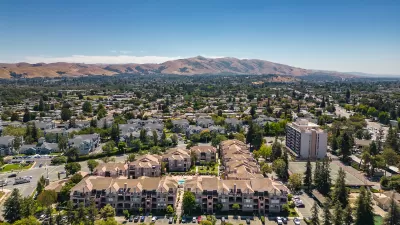How the journey of one zoning reform campaign can inform future efforts.

When Portland requested public comment on its residential infill project in early 2020, "the in-person public commentary came to 106 in favor of pro-housing reform and 30 opposed," signaling overwhelming support for a frequently controversial form of rezoning, writes Michael Andersen. Thanks to the work of a vast network of community activists, planners, developers, and city staff, the proposal gained the support needed to make Portland one of the nation's first big cities to begin reversing the status quo of single-family zoning.
"The result was an unprecedented reform, legalizing up to four homes by right on almost any residential lot," permitting three-story buildings, and eliminating residential parking requirements in an effort to create more affordable housing in the city. "Portland’s most optimistic projection of the short-term impact comes out to 1,200 net additional homes per year, enough to increase the city’s annual housing production by roughly 20 percent," which could amount to a 12 percent reduction in the median rent.
Andersen's article details the eight situations when the reform could have died. These include NIMBY resistance, a lack of representation in initial community input, displacement disputes, and other scenarios that typically doom such initiatives to failure. "Whatever may or may not get built, there is no question that this reform’s unlikely five-year journey to passage offers political lessons for similar cities pursuing zoning and policy changes."
FULL STORY: THE EIGHT DEATHS OF PORTLAND’S RESIDENTIAL INFILL PROJECT

Alabama: Trump Terminates Settlements for Black Communities Harmed By Raw Sewage
Trump deemed the landmark civil rights agreement “illegal DEI and environmental justice policy.”

Planetizen Federal Action Tracker
A weekly monitor of how Trump’s orders and actions are impacting planners and planning in America.

The 120 Year Old Tiny Home Villages That Sheltered San Francisco’s Earthquake Refugees
More than a century ago, San Francisco mobilized to house thousands of residents displaced by the 1906 earthquake. Could their strategy offer a model for the present?

In Both Crashes and Crime, Public Transportation is Far Safer than Driving
Contrary to popular assumptions, public transportation has far lower crash and crime rates than automobile travel. For safer communities, improve and encourage transit travel.

Report: Zoning Reforms Should Complement Nashville’s Ambitious Transit Plan
Without reform, restrictive zoning codes will limit the impact of the city’s planned transit expansion and could exclude some of the residents who depend on transit the most.

Judge Orders Release of Frozen IRA, IIJA Funding
The decision is a victory for environmental groups who charged that freezing funds for critical infrastructure and disaster response programs caused “real and irreparable harm” to communities.
Urban Design for Planners 1: Software Tools
This six-course series explores essential urban design concepts using open source software and equips planners with the tools they need to participate fully in the urban design process.
Planning for Universal Design
Learn the tools for implementing Universal Design in planning regulations.
Clanton & Associates, Inc.
Jessamine County Fiscal Court
Institute for Housing and Urban Development Studies (IHS)
City of Grandview
Harvard GSD Executive Education
Toledo-Lucas County Plan Commissions
Salt Lake City
NYU Wagner Graduate School of Public Service





























